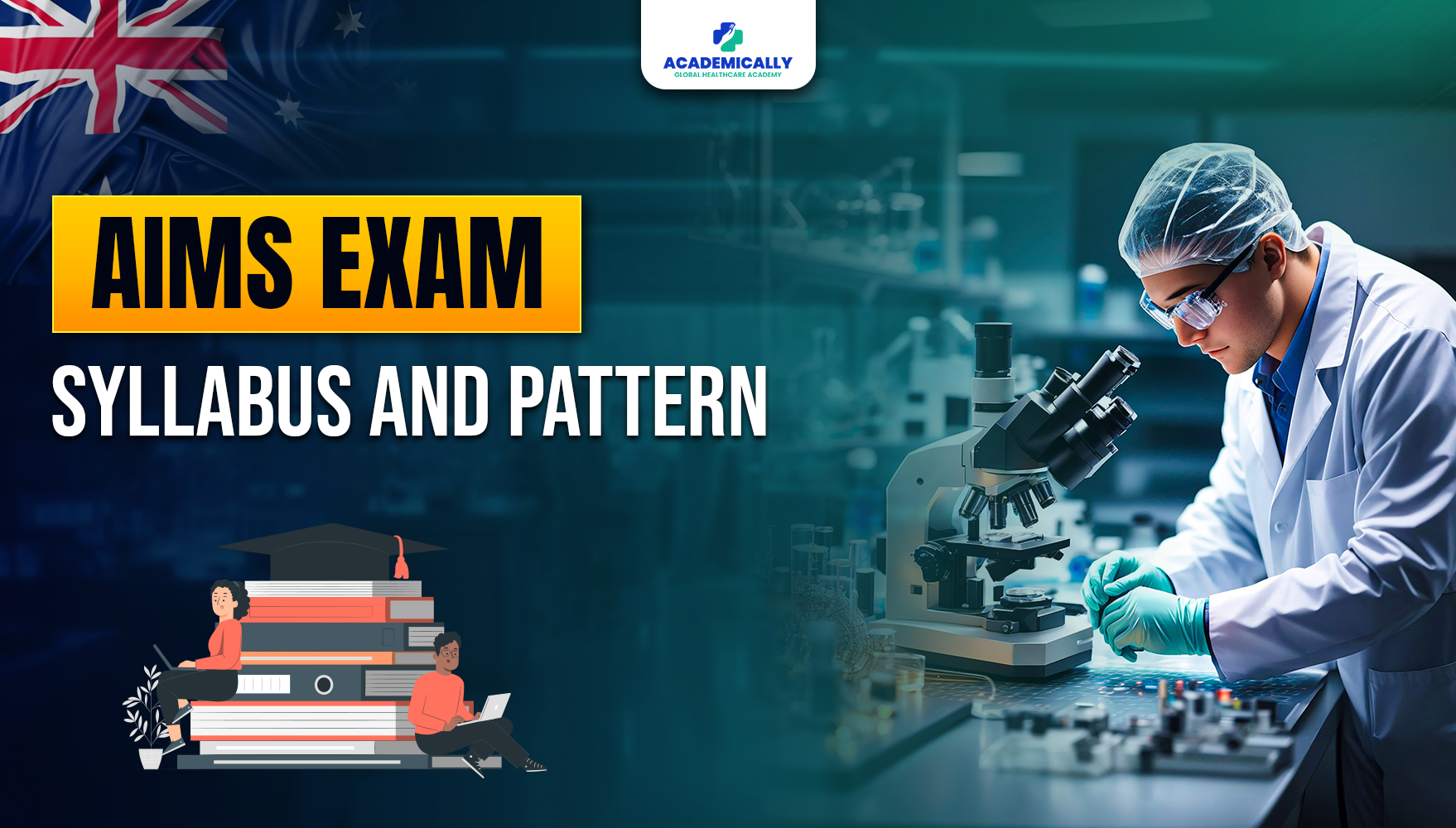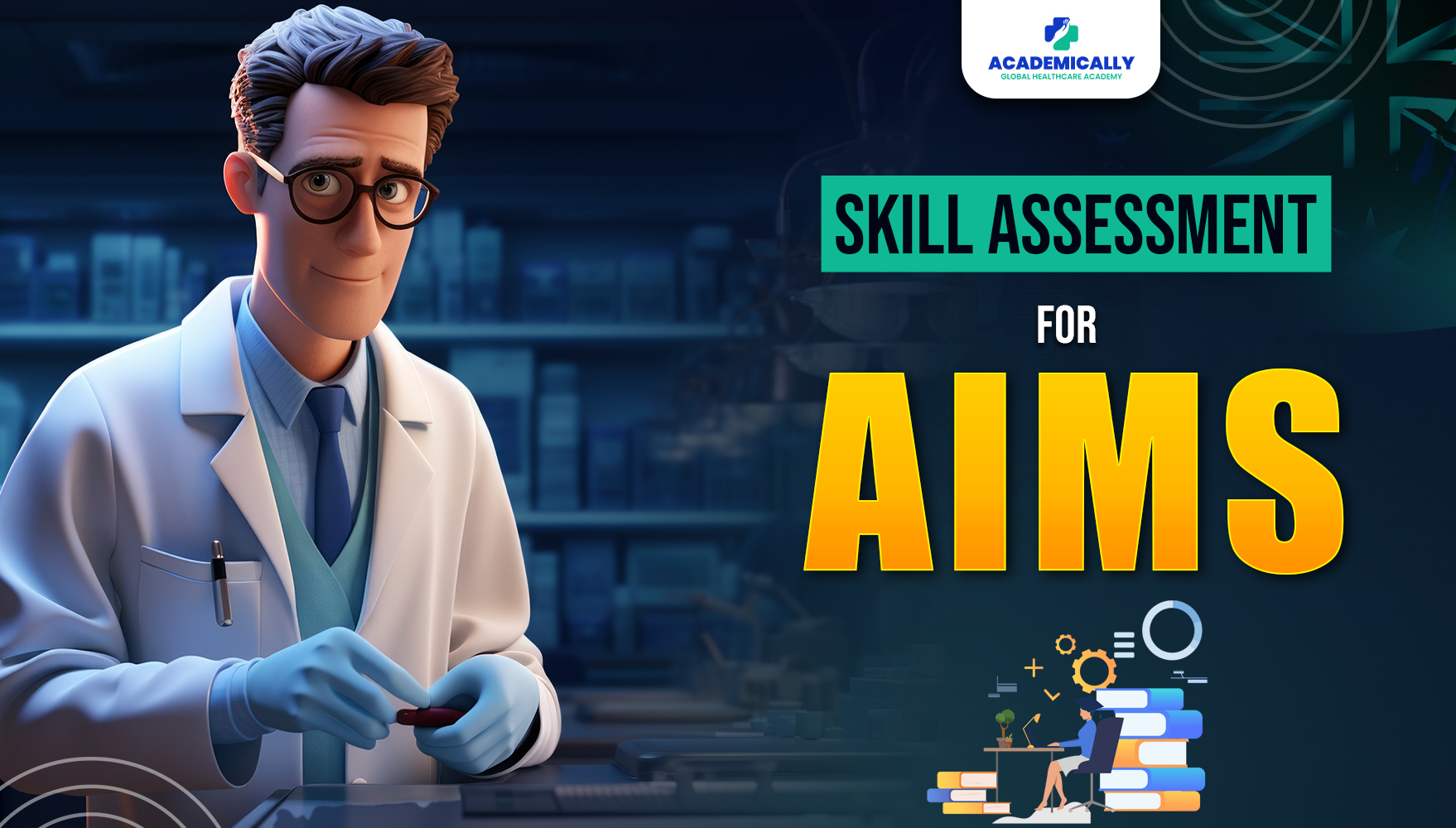
What is the AIMS Exam?
If you are a medical laboratory technician or scientist dreaming of building your healthcare career in Australia, the AIMS exam will be a huge part of your journey. The AIMS exam stands for the Australian Institute of Medical and Clinical Scientists. The Australian Board of Medical and Clinical Scientists conducts this assessment. Once you clear the AIMS exam, you will be eligible to seek registration to practise as a medical laboratory technician or scientist within the Australian healthcare system. This exam is mandatory for overseas-trained medical laboratory technicians and scientists so as to determine their skills and knowledge to practise in Australia.
What is the Purpose of the AIMS Exam?
The AIMS exam serves as a pivotal evaluation for internationally trained medical laboratory technicians and scientists, determining their eligibility for the skilled occupation of a medical laboratory scientist and professional membership with AIMS. This examination is a crucial step for individuals aspiring to attain certification as medical laboratory professionals in Australia. The assessment focuses on measuring candidates' comprehension of diverse scientific concepts and laboratory techniques, assessing their proficiency in the application of these skills. A network of AIMS exam centres worldwide facilitates the examination process, allowing candidates from different regions to undergo this important assessment. This can ultimately determine if the candidate is the right fit to practise as a medical laboratory scientist in Australia by adhering to the standards set by the Australian healthcare system.
Exam Pattern
The AIMS exam is structured with 150 multiple-choice questions, each requiring a single response, to be completed within a three-hour timeframe. To successfully clear the examination, candidates are expected to provide 80 correct answers within this stipulated period. The exam, designed for aspiring medical laboratory scientists, is conducted twice a year, in March and September, providing candidates with two opportunities each year to demonstrate their knowledge and proficiency in the field.
AIMS Exam Syllabus Overview
The AIMCS syllabus is comprehensive, covering a broad spectrum of subjects relevant to medical laboratory sciences. While the syllabus may be subject to periodic updates, a typical outline includes the following key areas:
Anatomical Pathology
- Preparation of specimens for light microscopy including fixation and tissue processing, decalcification technique and general staining methods such as Haematoxylin and Eosin stain, Van Gieson stain and Masson Trichrome stain
- Normal histology especially basic tissue types
- Histochemical methods as applied to light microscopy such as PAS and Perls Prussian Blue for Iron
- Fixation of cytological specimens
- The Papanicolaou staining technique
- The cytological features of inflammation and neoplasia in cervical smears
- Normal cell types in cytological specimens.
Chemical Pathology
An understanding of the underlying techniques utilised and methodology behind the measurement of common chemistry analytes and their clinical utility, including:
- Blood gas and electrolyte measurement
- Urea, creatinine, and creatinine clearance, uric acid
- Glucose, glucose tolerance, HbA1c
- Liver function tests
- Lipid analysis
- Plasma proteins and protein electrophoresis
- Specific plasma proteins, e.g., CRP
- Principles of enzymatic analysis
- Enzyme tests, e.g., amylase, creatine kinase
- Calcium, phosphate, magnesium
- Bilirubin, including neonatal bilirubin measurement
- Myocardial function tests
- Common tumour markers, e.g., Prostatic specific antigen, CEA
- Basic virology tests now performed in core laboratory settings
- Endocrinology, such as Thyroid function tests and Adrenal function tests
- Bioinstrumentation, including Immunoassay, spectrophotometric assays and Point of Care Testing
- Quality Control concepts as they apply to the automated biochemistry laboratory
Genomic Pathology
- Basic understanding of inheritance
- Structure of DNA and all forms of RNA
- Mitochondrial DNA
- Transcription and translation
- Influence of epigenetics on phenotypes
- Chromosome structure and common pathologies associated with chromosomal abnormalities
- Common mutations in oncology, inborn errors of metabolism
- Principles of basic thermal and isothermal PCR techniques, including sample preparation and use of controls
- Principles of reverse transcriptase PCR, real-time PCR and multiplex PCR
- Sample integrity for DNA and RNA-based techniques
- Awareness of next-generation sequencing (NGS) techniques.
Haematology
- Principles of automated cell counting
- Macrocytic anaemia
- Microcytic anaemia
- Normocytic anaemia
- Myeloproliferative disorders
- Lymphoproliferative disorders
- Production of erythrocytes, leucocytes and platelets
- Iron metabolism
- Intrinsic and extrinsic coagulation pathways and methods of testing
- Bleeding disorders
- Anticoagulant therapy and methods of monitoring this therapy
- Natural anticoagulants
- Fibrinolysis
- Malaria testing and species
- Quality control in haematology and coagulation
- Pre-analytical factors in haematology and coagulation.
Immunopathology
- Basic understanding of the structure and function of the immune system
- Adaptive and acquired immune mechanisms
- Cellular and humoral immune responses
- Immunoglobulin properties and functions
- Key cytokines, i.e., IL-1, IL-2, IL-4, IL-6, IL-17, TNF and their functions
- Monoclonal antibodies, their production, properties and uses
- Mechanisms of hypersensitivity and their laboratory investigation
- Acquired and inherited immune deficiency conditions, major autoimmune conditions and their laboratory investigation
- Principles of immunology-based assays, e.g., immunophenotyping using flow cytometry, immunochromatographic techniques, solid-phase immune assays, and immunohistochemical techniques.
Medical Microbiology
- A basic knowledge of infectious diseases and organisms most commonly associated with these diseases. There will be a greater emphasis on bacterial diseases, but some knowledge of parasitic, fungal and viral diseases is also expected.
- Collection, handling and processing of samples, including the minimum criteria for acceptance of samples
- Knowledge of normal flora (indigenous flora) of major body sites or absence of normal flora in sterile body sites
- Presumptive identification of major groups of bacteria based on microscopic and colonial morphology on a variety of common media, including chromogenic media, and the use of key basic identification tests such as catalase, oxidase and atmospheric growth requirements
- Principles of major methods of susceptibility testing, i.e., disc diffusion, agar dilution and broth dilution and the relationship between breakpoints, MIC and susceptible/resistant categories
- Microscopy: Function and maintenance of a modern binocular microscope, including setting up and using for bright-field, phase-contrast and dark-field microscopy
- Staining techniques: Gram stain, Ziehl Neelsen stain, Modified ZN stains
- General principles of quality control and quality assurance as they apply to microbiology
- Safety in the microbiology laboratory, Biosafety Cabinets, Biosafety levels.
Transfusion Science
- Antibody structure and function
- Antigen/antibody interaction
- Antibody production
- Blood donation testing
- Blood components
- Blood group systems
- Antibody detection and identification
- Pre-transfusion testing
- Haemolytic disease of the foetus and newborn
- Quality assurance in the blood bank laboratory
- Internal quality control and external quality assurance in the blood bank.
Laboratory Safety and Quality Control
- Safe handling of biological specimens
- Safe handling of hazardous chemicals
- Sterilisation and disinfection procedures
- Handling of infectious specimens.
Principles of Quality Assurance and Quality Control
- Basic charting and rules for rejection of results
- Simple statistical evaluation, Reference ranges methodology – parametric and non-parametric
- The role of internal quality control and external quality assurance
- Uncertainty of measurement.
Basic Laboratory Procedures and Equipment
- Normal and molar solutions
- Basic laboratory calculations
- Basic laboratory equipment and its appropriate use
- Spectrophotometry.
Conclusion
In conclusion, the Australian Institute of Medical and Clinical Scientists (AIMS) examination stands as a significant milestone for individuals pursuing careers as certified medical laboratory scientists and technicians in Australia. This comprehensive evaluation is specifically designed to assess the eligibility of overseas-trained professionals for the skilled occupation of a medical laboratory scientist and to grant them professional membership with AIMS.
The AIMS exam goes beyond testing theoretical knowledge, extending its scrutiny to the practical application of scientific concepts and laboratory techniques. This holistic approach ensures that successful candidates not only possess a solid theoretical foundation but also demonstrate the practical skills necessary for the dynamic field of medical laboratory sciences.
Furthermore, the global reach of AIMS is exemplified by the presence of examination centres around the world. This accessibility allows aspiring professionals from diverse regions to undergo the evaluation, contributing to the internationalisation of the medical laboratory science profession.
In essence, the AIMS examination process is a rigorous and thorough assessment, emphasising the importance of well-rounded competence in the medical laboratory sciences. Successfully navigating this examination not only opens doors to professional opportunities in Australia but also signifies a high level of proficiency and dedication to the field. As candidates prepare for and undertake the AIMS exam, they embark on a transformative journey toward becoming adept and globally recognised medical laboratory professionals.
Fill up this form for a free one on one counselling session.



